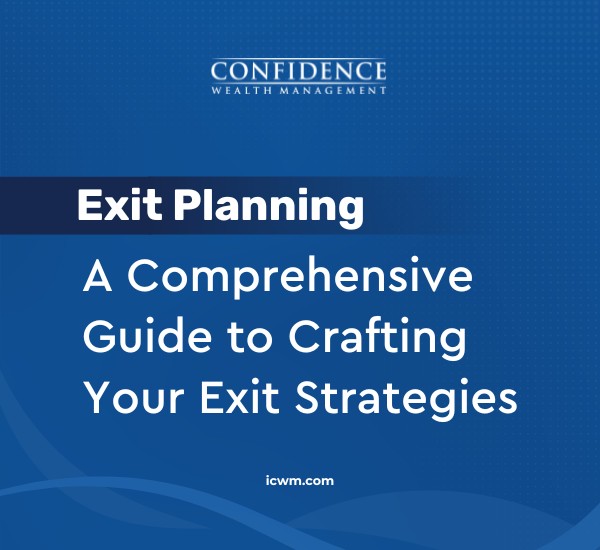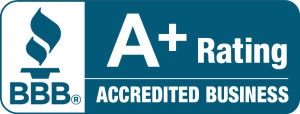A client came to me for advice because they were nervous about a large stock holding they’d recently inherited.
This was a savvy client, someone who knew about diversification, and the concentration of so much money in one place was keeping them up at night.
I walked them through the options open to them and the costs of selling. There was a lot to figure out.
Whether you’ve inherited a large holding as they did or have exercised options, sold a private business, hold restricted stock, or benefited from repeated stock splits over the years, having a large position in a single stock carries unique challenges.
The choices appropriate for you can be complex and will depend on your situation and tax considerations, but here is a brief overview of some of your options.
Sell Your Shares
This frees up funds that can be used to diversify a portfolio. There are some issues, though.
If you have a low cost basis, you may have to worry about capital gains taxes. You may also want to avoid any perception of market manipulation or insider trading. To ease concerns, you might consider selling shares over time, which can help you manage the tax bite in any one year, yet allow you to participate in any future growth.
You’ll need to consider the tax consequences of any sale. Long-term capital gains are generally taxed at special capital gains tax rates of 0%, 15%, and 20%, depending on your taxable income.
By contrast, because short-term capital gains are taxed as ordinary income, the top short-term capital gains tax rate can be 37%. Higher-income taxpayers should be aware that they may be subject to an additional 3.8% Medicare unearned income tax on net investment income (unearned income includes capital gains) if their adjusted gross income exceeds $200,000 (single filers) or $250,000 (married joint filers).
If you hold restricted shares, you can set up a 10b5-1 plan, which spells out a predetermined schedule for selling shares over time. Such written plans specify in advance the dates, prices, and amounts of each sale, and comply with Securities and Exchange Commission Rule 144, which governs the sale of restricted stock and was designed to prevent insider trading.
A 10b5-1 plan demonstrates that your selling decisions were made before you had any insider knowledge that could influence specific transactions. (However, terminating the plan early or selling too much too quickly could raise questions).
You can try to avoid some of the restrictions on how much and when you can sell by selling shares privately rather than on the public market. However, you would likely have to sell at less than the market value and would still face capital gains taxes.
Hedge Your Position
If you want to protect yourself in the short term against the risk of a substantial drop in price you can manage risk by using options. Keep in mind though that options are a sophisticated tool and aren’t appropriate for
all investors.
Buying a protective put places a floor under the value of your shares by giving you the right to sell at a predetermined price. Buying put options that can be exercised at a price below your stock’s current market value can help limit potential losses on the underlying equity while allowing you to continue to participate in any potential appreciation.
However, you’ll lose money on the option itself if the stock’s price remains above the put’s strike price.
Another way to protect yourself from a price drop is to sell covered calls with a strike price above the market price. However, the call limits the extent to which you can benefit from any price appreciation. And if the share price reaches the call’s strike price, you have to be prepared to meet that call.
A collar involves buying protective puts and selling call options whose premiums offset the cost of buying the puts. As with a covered call, the upside appreciation for your holding is then limited to the call’s strike price. If that price is reached before the collar’s expiration date, you would lose not only the premium you paid for the put but also face capital gains on any shares you sold.
If you do use a collar, be careful about closing one side of it while the other side of the trade remains outstanding. For example, if you exercise the put but the shares you sell are later called away before the call’s expiration date, you could be left with an uncovered call.
That could put you in a position to potentially suffer a loss if you had to repurchase the shares at a higher price to fulfill the call.
Monetize the Position
If you want immediate liquidity, you might be able to use a prepaid variable forward (PVF) agreement. With a PVF, you contract to sell your shares later at a minimum specified price. You receive most of the payment for those shares, typically 80% to 90% of their value, when the agreement is signed.
You are not obligated to turn over the shares or pay taxes on the sale until the PVF’s maturity date, which might be years away. When that date is reached, you must either settle the agreement by making a cash payment or turn over the appropriate number of shares, which will vary depending on the stock’s price at that time.
In the meantime, your stock is held as collateral, and you can use the up-front payment to buy other securities that can help diversify your portfolio. In addition, a PVF still allows you to benefit a bit from any price appreciation during that time, though there may be a cap on that amount.
All that said, PVF agreements are complicated and the IRS warns that care must be taken when using them.
Borrow to Diversify
If you want to keep your stock but need money to build a more diversified portfolio, you could use your stock as collateral to buy other securities on margin. However, trading securities in a margin account involves risks because you can lose more funds than you deposit.
It’s risky and complicated enough that you should consider speaking with a financial professional before attempting it on your own.
Exchange Your Shares
You can trade some of your stock for shares in an exchange fund (a private placement limited partnership that pools your shares with those contributed by other investors who also may have concentrated stock positions). After a set period, generally seven years, each of the exchange fund’s shareholders is entitled to a prorated portion of its portfolio.
Taxes are postponed until you sell those shares, and when you do you’ll pay taxes on the difference between the value of the stock you contributed and the price received for your exchange fund shares.
Though it provides no liquidity, an exchange fund may help reduce taxes while providing greater diversification. Check on the costs involved with an exchange fund as well as what other securities it holds. At least 20% must be in non-publicly traded assets or real estate, and the more overlap between your shares and those already in the fund, the less diversification you achieve.
Remember also that diversification alone does not guarantee a profit or protect against investment loss.
Donate Shares to a Trust
If you want income rather than growth from your stock, you can transfer shares to a trust. If you have highly appreciated stock, consider donating it to a charitable remainder trust (CRT). You could also qualify for an income tax deduction on the estimated present value of the remainder interest that will eventually go to charity.
Typically, the trust can sell the stock without paying capital gains taxes and reinvest the proceeds to provide an income stream for you as the donor. When the trust is terminated, the charity retains the remaining assets.
You can set a payout rate that meets both your financial objectives and your philanthropic goals, but the donation is irrevocable.
Another option is a charitable lead trust (CLT), which you can consider as the mirror image of a CRT in many ways. With a CLT, the charity receives the income stream for a specified time. At the end of the trust period, the remaining assets are paid to the grantor or the grantor’s heirs.
This can help reduce, or in some cases even eliminate, estate taxes on appreciated assets that eventually go to the grantor’s heirs.
There are costs associated with creating and maintaining trusts. You receive no tax deduction for transferring assets unless you name yourself the trust’s owner, in which case you will pay taxes on the annual income. Other philanthropic options include donating directly to a charity or private foundation and taking a tax deduction.
Conclusion
There are a lot of options for handling a concentrated position. Which one to choose depends on your
unique situation.
We helped my client find theirs and would love to do the same for you. As experienced financial professionals, we are here to help you overcome the obstacles that business owners often face so you can seize the opportunities before you. We’re here to serve as a resource for you to discuss your current financial situation and future goals.
Please contact us and let us help you discover your dream retirement. We would be delighted to go on the journey with you.










